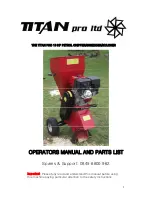
Part 3 - Ins
talla
tion and Field Se
ttings
DC Inverter Chiller
45
Table 3-3.1: Applicable standard of water quality for the unit
pH
value
Total
hardness
Conductivity
Sulfide ions
Chloride
ions
Ammonia
ions
Sulfate
ions
Silicon
Iron
Sodium
ions
Calcium
ions
6.8-
8.0
< 70ppm
< 200
μV/cm
(25⁰C)
No
requirement
<
50ppm
No
requirement
<
50ppm
<
30ppm
<
0.3ppm
No
requirement
<
50ppm
3.2.1
Performance adjustment factors
The antifreeze must be required according to anyone condition as following:
The ambient temperature is below 0
⁰C
;
Don’t start up the unit for a long time.
The power supply was cut off and needn’t change the water in system.
3.2.2 E
thylene and Propylene Glycol factors
A glycol solution is required when the unit with condition as mentioned. The use of glycol will reduce the performance of
the unit depending on concentration.
Table 3-3.2: Ethylene glycol
Concentration of
ethylene glycol
(%)
Modification coefficient
Freezing point (°C)
Cooling capacity
Power input
Water resistance
Water flow
0
1.000
1.000
1.000
1.000
0
10
0.984
0.998
1.118
1.019
-4
20
0.973
0.995
1.268
1.051
-9
30
0.965
0.992
1.482
1.092
-16
40
0.960
0.989
1.791
1.145
-23
50
0.950
0.983
2.100
1.200
-37
Table 3-3.3: Propylene glycol
Concentration of
propylene glycol
(%)
Modification coefficient
Freezing point (°C)
Cooling capacity
Power input
Water resistance
Water flow
0
1.000
1.000
1.000
1.000
0
10
0.976
0.996
1.071
1.00
-3
20
0.961
0.992
1.189
1.016
-7
30
0.948
0.988
1.380
1.034
-13
40
0.938
0.984
1.728
1.078
-22
50
0.925
0.975
2.150
1.125
-35
3.2.3
Altitude correction factors
Performance tables are based at sea level. Elevations other than sea level affect the performance of the unit. The
decreased air density will reduce condenser capacity and reduce the unit’s performance. For performance at elevations
other than sea level refer to Table 3-3.4. Maximum allowable altitude is 1800meters.
3.2.4
Evaporator temperature drop factors
Performance tables are based on a 5
⁰C
temperature drop through the evaporator. Adjustment factors for applications
with temperature ranges from 3
⁰C
to 6
⁰C
in follow table. Temperature drops outside this range can affect the control
system’s capability to maintain acceptable control and are not recommended.
















































